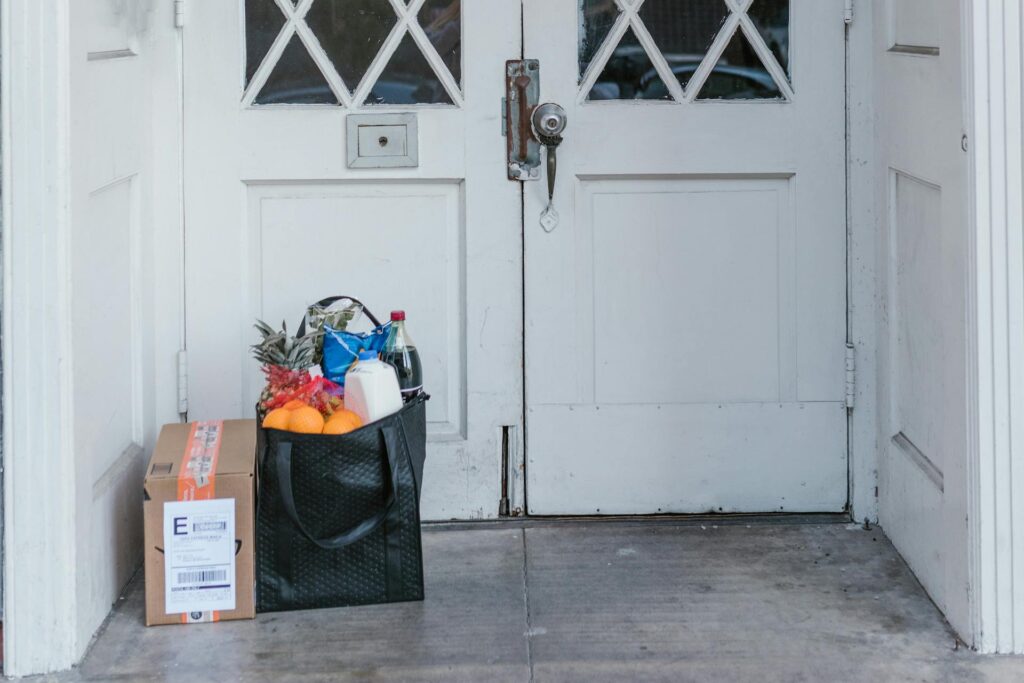Are Florida’s streets safer in 2024, or is crime escalating? With detailed crime statistics in Florida now available, we tackle this question head-on. Explore the comprehensive data on violent offenses, property crimes, and how Florida ranks against national figures. We provide the straightforward, hard facts to paint the current picture of Florida’s battleground against crime.
Analyzing the Latest Trends: Crime Statistics in Florida for 2024
Florida has witnessed a statewide decrease in both violent and property crimes, reflecting efforts from law enforcement, community initiatives, and policy changes, despite certain cities exhibiting contrasting crime trends. Demographic factors, including age and socio-economic conditions, heavily influence Florida’s crime rates, with younger age groups involved in violent crimes and areas with economic disparities experiencing higher crime rates.
Virtual Security systems are becoming increasingly important in Florida’s crime prevention strategies, offering tangible benefits like burglary reduction and homeowner’s insurance premium discounts.
Florida’s Crime Landscape: An Overview

Florida’s crime landscape is as diverse as its population, with crime rates varying across its numerous cities. However, the Sunshine State has witnessed a significant decrease in both violent and property crimes, aligning with a national downward trend. This reduction in crime is a testament to the relentless efforts of law enforcement agencies, community initiatives, and effective administration. Governor Ron DeSantis has proudly cited this decrease in crime rates as a key achievement of his administration, a testament to policies and initiatives aimed at creating safer communities.
An illustrative example is a city in Florida that reported a significant year-over-year crime reduction, with a 6.7% decrease in violent crime and an 18.5% decline in property crime. This reduction, while impressive, is just the tip of the iceberg. Behind these numbers are countless stories of resilience, community spirit, and unwavering commitment to safety. From proactive neighborhood watch programs to innovative policing methods, the people of Florida have proven that they can turn the tide against crime, as evidenced by the fbi crime data.
Violent Crime Rate in Florida
Florida’s violent crime rate certainly warrants attention. Despite the challenges, Florida’s violent crime rate has remained stable and below the national average. This stability is not merely a statistic; it reflects the continuous efforts of law enforcement, community leaders, and residents towards maintaining peace and security.
To put it in perspective, let’s consider a specific crime – murder. The murder rate in Florida currently stands at 5 per 1,000 residents. While any life lost is a tragedy, this figure paints a picture of a state that, despite its challenges, is striving to safeguard its residents. Furthermore, Florida’s overall safety ranking as the 21st most dangerous state to live in terms of safety underscores the progress made and the journey ahead.
Property Crime Rate in Florida
As we delve deeper into Florida’s crime statistics, it’s important to consider property crimes, which encompass categories such as:
- burglary
- larceny-theft
- motor vehicle theft
- arson
In Florida, the property crime rate stands at 1770 incidents per 100,000 people. While this statewide rate provides valuable insight, the real story unfolds when we take a closer look at specific cities.
For instance, Marco Island has witnessed a significant 50% reduction in property crime rates since 1990. However, not all cities share this positive trend. Sunny Isles Beach, for example, reported an increase in the property crime rate to 12.0 incidents per 1,000 people in 2024. These contrasting scenarios underscore the importance of targeted interventions tailored to the unique challenges faced by each city.
The Impact of Demographics on Crime Rates

Unraveling the intricate layers of crime rates in Florida, we find that demographic research plays a crucial role. Age groups, for instance, have a significant influence on crime trends within the state. Understanding these demographic influences not only offers a clearer picture of crime dynamics but also aids in the development of targeted crime prevention strategies.
Socio-economic conditions, another demographic factor, are also instrumental in shaping crime rates. From disparities in income levels to systemic issues, these factors interact in complex ways to influence crime trends. By understanding these influences, we can work towards creating a more equitable society where everyone feels safe and secure.
Age Group and Crime Offenses
When it comes to the relationship between age and crime, the 20-39 age group emerges as a significant demographic. This group is responsible for a considerable number of violent crime offenses in Florida. While these numbers may seem alarming, it’s crucial to remember that they don’t define an entire generation. They simply highlight a demographic that, for various reasons, is more likely to be involved in these crimes.
However, it’s not all bleak. Juvenile crime rates have shown a promising decline in recent years, with a notable decrease in the number of violent crimes committed by individuals under 18. Yet, certain types of violent crimes such as aggravated assault have seen an uptick among the juvenile demographic. These contrasting trends underline the need for nuanced approaches to youth crime prevention.
Socio-Economic Factors and Crime Rates
Turning our attention to socio-economic factors, it’s evident that these play a significant role in shaping crime rates. For instance, a notable number of Floridians, 61% to be precise, express daily concerns about safety. Furthermore, 75% believe crime is on the rise, reflecting socio-economic tensions. These perceptions of safety and crime are not merely individual views but reflections of broader socio-economic realities.
A case in point is Opa-Locka, where a staggering 50.9% of the population lives below the poverty line. This city serves as a stark reminder of how high poverty rates may contribute to elevated crime rates. Furthermore, Florida’s Black population experiences the highest arrest rates, pointing to potential socio-economic inequalities in the justice system. Addressing these systemic issues is vital in crafting effective crime prevention strategies.
Gun Violence in the Sunshine State

In Florida, the blazing sun isn’t the only thing that can burn. The state has been grappling with the fiery issue of gun violence. In 2024, Florida had a firearm mortality rate of 14.1 deaths per 100,000 population, a figure punctuated by three mass shootings in January. These incidents, while heart-wrenching, serve as a reminder of the urgent need for effective gun control measures.
However, there’s a silver lining. There has been a decrease in deaths and injuries from gun violence compared to previous years, and the number of mass shootings decreased slightly in 2023. Simultaneously, new legislation now allows individuals in Florida to carry concealed weapons without a license, provided they are legally allowed to possess firearms. This delicate balance between individual rights and public safety is at the heart of the gun control debate.
Aggravated Assaults and Firearms
Among the different types of gun violence, aggravated assaults involving firearms are particularly prevalent in Florida. These incidents are not uniformly distributed across the state but vary across different counties. For instance, in Alachua County, the rate of aggravated assaults involving firearms stood at 118.7 per 100,000 population in 2022, while Miami-Dade County reported a rate of 108.1 per 100,000 population.
These regional disparities highlight the need for location-specific strategies to combat firearm-related aggravated assaults. Understanding the unique challenges and strengths of each county can help in formulating effective measures to reduce such incidents and ensure the safety of residents.
Law Enforcement Agencies and Gun Control Initiatives
In the face of gun violence, law enforcement agencies and legislative bodies in Florida have been proactive. For instance, in response to the Parkland school shooting in 2018, Florida strengthened its gun laws with an Extreme Risk process designed to remove firearms from individuals considered dangerous.
Furthermore, Florida law enforcement agencies are mandated to use the federal tracing system for all firearms recovered at crime scenes, ensuring the origin and history of each firearm is documented. The state also empowers local jurisdictions to create and implement their own gun safety policies, which can affect the effectiveness of law enforcement agencies in controlling firearm-related incidents. By utilizing a summary reporting system, these agencies can better track and analyze data related to firearms and crime.
These measures exemplify Florida’s commitment to combating gun violence and ensuring public safety.
Package Theft: A Growing Concern

Shifting our gaze from the more violent crimes, let’s focus on a less alarming but increasingly prevalent issue – package theft. This form of property crime has been on the rise in Florida, mirroring a nationwide increase. With the surge in online shopping, especially during the pandemic, package theft has become a growing concern for Florida residents.
Package theft may seem trivial compared to other crimes, but it can cause significant inconveniences and financial losses. Florida residents affected by package theft report an average loss of $106 per incident, with a significant portion of stolen packages never being reported to authorities. But fear not, there are various preventative measures in place to combat this rising trend.
Package Theft Statistics
To understand the extent of package theft in Florida, let’s delve into some statistics. In Florida:
- 17.3% of residents experienced at least one package theft in 2020, which is 7.70% below the national average.
- This translates to approximately 3.74 million people in Florida having had at least one package stolen.
- Package theft affects up to 43.1% of the state’s 8.67 million households.
The median value of stolen packages in Florida was $44 in 2020, a figure that is 16.7% below the national average median value. While these numbers may seem disheartening, they serve as a powerful incentive for finding effective ways to mitigate package theft.
Best Ways to Protect Against Package Theft
The battle against package theft is not a lost cause. There are several ways in which Florida residents can safeguard their deliveries, including:
- Delivery tracking, which is a key tool utilized by 88% of online shoppers to prevent package theft
- Installing home surveillance cameras
- Using package lock-boxes
- Opting for package insurance
In addition, alternative delivery locations such as Amazon Lockers are being increasingly used to secure deliveries. Moreover, neighborhood watch programs and the increased presence of law enforcement during delivery hours have contributed to reducing package theft in some Florida communities. By adopting these measures, Florida residents can protect their deliveries and enjoy a hassle-free online shopping experience.
Safest Cities in Florida: A Closer Look
While crime rates provide a crucial understanding of safety in Florida, it’s also important to highlight the cities that stand out for their low crime rates. Among these is Marco Island, which leads as the safest city in Florida for 2024. This island city, with its low total crime numbers, stands as a beacon of safety amidst the vastness of the Sunshine State.
But Marco Island isn’t the only city setting safety benchmarks. There are several other cities that are recognized for their low crime rates and safety measures, including:
- Sunny Isles Beach
- Doral
- Kissimmee
- Largo
These safe havens, in contrast to dangerous cities, provide a blueprint that other cities can follow to enhance their safety profiles.
Marco Island: The Safest City
Marco Island, a beautiful city nestled on the southwestern coast of Florida, proudly holds the title of the state’s safest city for 2024. With only 7 violent crimes reported, Marco Island has set a high standard for safety. The city’s crime rates are so low that it reported zero murders, underscoring its reputation as an exceptionally safe area.
In Marco Island, safety isn’t just about low crime rates. It’s also about the sense of security that residents feel in their daily lives. A majority of Marco Island residents feel secure, even when walking alone at night, indicating a strong sense of personal safety. This sense of security is invaluable and contributes to the high quality of life enjoyed by Marco Island’s residents.
Other Top Safe Cities
While Marco Island holds the title of the safest city in Florida, there are other cities that deserve recognition for their safety records. Some of the top safe cities in Florida include:
- Sunny Isles Beach
- Doral
- Kissimmee
- Largo
These cities have managed to keep their crime rates low, thanks to effective law enforcement and community initiatives.
Each of these cities has its unique set of strengths and strategies that have contributed to their safety records. By learning from these cities, others can implement similar strategies and contribute to the overall safety of Florida. The successes of these cities serve as a beacon of hope, illustrating that safety is an achievable goal for all communities.
Security Systems: A Key to Crime Prevention
In the fight against crime, one tool stands out for its effectiveness – security systems. In Florida, these systems act as a significant deterrent to criminal activities. Studies have shown a correlation between the rise in security system installations and a reduction in residential burglaries. The presence of both wired and wireless security systems significantly enhances the safety of Florida’s residents and their properties.
In addition to enhancing safety, security systems also offer financial benefits. For instance, Florida residents who install security systems in their homes can avail reductions in homeowner’s insurance premiums. Hence, security systems not only protect residents but also provide tangible financial benefits.
Types of Security Systems
When it comes to security systems, Florida residents have multiple options to choose from. These options range from wired home security systems, known for their reliability, to wireless systems that offer flexibility and convenience. Each system type has its benefits and drawbacks, allowing residents to choose the one that best suits their needs.
For instance, wired security systems are less prone to hacking and maintain consistent service. On the other hand, wireless systems allow for remote access and easy customization but may require frequent maintenance. Moreover, home security offerings in Florida may include alarm systems that not only alert residents and deter intruders but can also be linked to monitoring services for quick notification of local authorities. These diverse options cater to various security needs and budgets, ensuring that every home in Florida can be protected.
Benefits of Security Systems
Security systems provide numerous benefits to Florida residents, including:
- Reducing the likelihood of property crime by displaying signs of having a home security system
- Deterring potential thieves from targeting homes with visible security measures
- Providing early alerts for emergencies such as fire and gas leaks, enhancing residents’ safety beyond preventing theft.
Wireless security systems offer the additional benefit of remote monitoring and customization. This flexibility allows Florida homeowners to tailor their security setup to meet individual needs. With a significant number of violent crimes occurring in homes, having a security system serves as a crucial domestic safety measure for Florida residents. Indeed, in the fight against crime, security systems prove to be a formidable ally.
Summary
From the bustling streets of Miami to the tranquil shores of Marco Island, the narrative of crime in Florida is marked by resilience and transformation. The state has witnessed a decrease in both violent and property crimes, with cities like Marco Island setting the standard for safety. Demographic factors, such as age and socio-economic conditions, play a crucial role in shaping crime rates. Meanwhile, the state grapples with gun violence and package theft, with legislative and community initiatives focusing on addressing these issues. Amid these challenges, security systems have emerged as a key tool in crime prevention, enhancing the safety of Florida’s residents. As we move forward, let’s remember: safety isn’t just about numbers and statistics; it’s about ensuring every Floridian feels secure and protected in their communities.
Frequently Asked Questions
What is the overall crime trend in Florida?
The overall crime trend in Florida has been decreasing, including both violent and property crimes, which is in line with national trends.
Which city in Florida is considered the safest?
Marco Island is considered the safest city in Florida due to its low total crime numbers.
How prevalent is package theft in Florida?
Package theft has been on the rise in Florida, following a nationwide increase in incidents. It is a significant concern for many residents.
How do security systems help in crime prevention?
Security systems act as a significant deterrent to criminal activities, and studies have shown a correlation between the rise in security system installations and a reduction in residential burglaries.
How does Florida address gun violence?
Florida addresses gun violence through a combination of state-implemented gun control measures and allowing local jurisdictions to establish their own policies. Additionally, recent legislation permits individuals to carry concealed weapons without a license if they are legally allowed to possess firearms.






